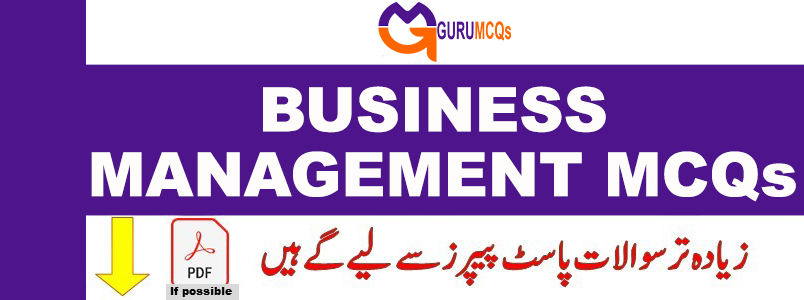
Enhance your preparation for a range of undergraduate, postgraduate, and entrance exams, including MCom, BCom, BBA, MBA, and others, with Business Management MCQs. These Marketing Management MCQs are also beneficial for NTS, FPSC, KPPSC, ETEA, and various other tests. Covering topics such as Business Communication, Communication Skills, Business Studies, Tally ERP, Capital Market, Business Economics, Enterprise Management, Strategic Management, and more, these MCQs provide answers and explanations. Additionally, you can find Human Resource Management (HRM) MCQs on the platform.
21. What is retail saturation?
A. Saturation is when a retailer reaches a point of national development where further growth will provide only limited benefits. At this stage, the geographical market will be covered and market share will be relatively high compared with other operators.
B. Saturation is when a retailer reaches a point of national development where considerable growth opportunities still exist. At this stage, the geographical market will not be covered and market share will be relatively low compared with other operators.
C. Saturation is when a retailer reaches a point of development where considerable growth opportunities still exist; although, market share will be relatively high compared with other operators.
D. Saturation is when a retailer is the largest retailer in the domestic market.
22. Which of these factors would you describe as a push factor?
A. Low operating costs in international markets
B. Good economic conditions in the domestic market
C. Good economic conditions in international markets
D. Restrictive regulatory environment in the domestic market
23. Which of these factors would you describe as a pull factor?
A. Hostile competitive environment in the domestic market
B. Depressed share prices in international markets
C. High concentration levels in the domestic market
D. Saturation in the domestic market
24. Alexander (1995) suggests that retailers at the moment of internationalisation occupy one of four positions. Which of the four lists is correct?
A. Autochthonic, pulled, pushed, expansive
B. Domestic, reactive, proactive, expansive
C. Automatic, reactive, proactive, proximate
D. Autochthonic, reactive, proactive, expansive
25. There should be two stages in the market selection process:
A. Market scanning and market entry
B. Market research and market entry
C. Market scanning and market research
D. Market entry and market selection
26. When researching a new market, qualitative research is useful to the retailer because:
A. it provides powerful commentaries and insights into the way consumers in a market think about certain issues.
B. it provides large samples relatively easily.
C. it is descriptive and easily measured and compared.
D. it provides small samples that are measured quantitatively.
27. When researching a new market, quantitative research is useful to the retailer because:
A. it provides consumer insights generated through focus groups and in-depth interviews.
B. it provides large samples relatively cheaply. It is descriptive and it is easily measured and compared.
C. it provides small samples very cheaply.
D. it provides small samples that are very expensive to analyze when compared with qualitative research.
28. Recently Alexander, Rhodes, and Myers (2007) have shown that:
A. the idea that retailers rely on a scientific approach to market selection, needs to be tempered by an understanding of the ‘non-systematic criteria’ of market selection, primarily the personal beliefs, experiences, or network groups that may influence market selection.
B. retailers rely purely on scientific criteria when selecting international markets.
C. retailers rely entirely on ‘non-systematic criteria’ such as personal beliefs, experiences and network groups when selecting international markets, ignoring the scientific approach completely.
D. retailers only rely purely on scientific criteria when selecting international markets in the home global region.
29. Scanning, an initial stage in the process of market assessment should:
A. be used to exclude markets and not to choose markets.
B. be used to choose markets only.
C. never be used to exclude markets.
D. be used to choose markets in some cases.
30. Which one of these statements is correct?
A. Traditionally, entry methods have tended to be classified along a risk/reward continuum.
B. Traditionally, entry methods have tended to be classified along a risk/control continuum.
C. Traditionally, entry methods have tended to be classified along a control/threat continuum.
D. Traditionally, entry methods have tended to be classified along a risk/threat continuum.
